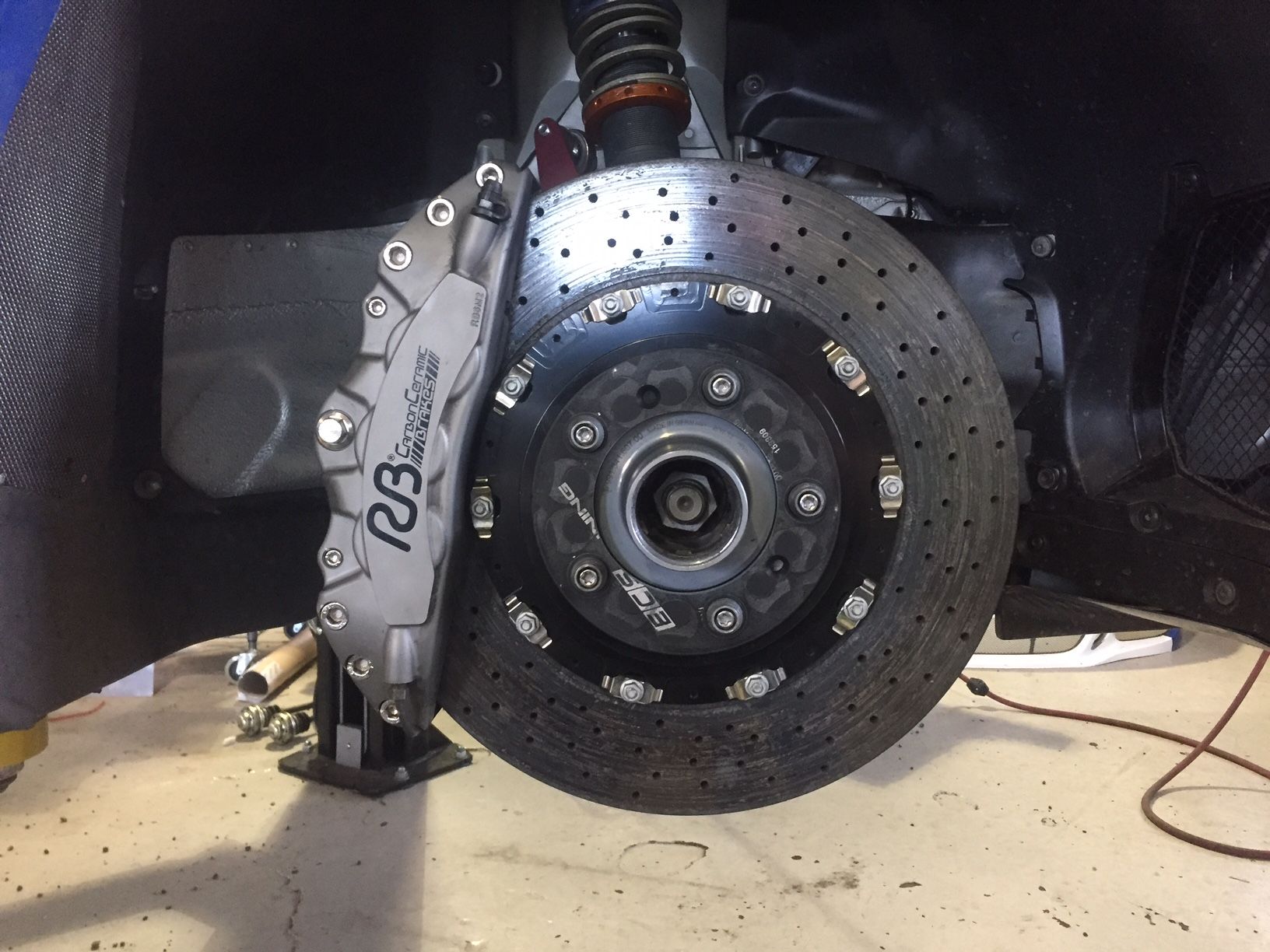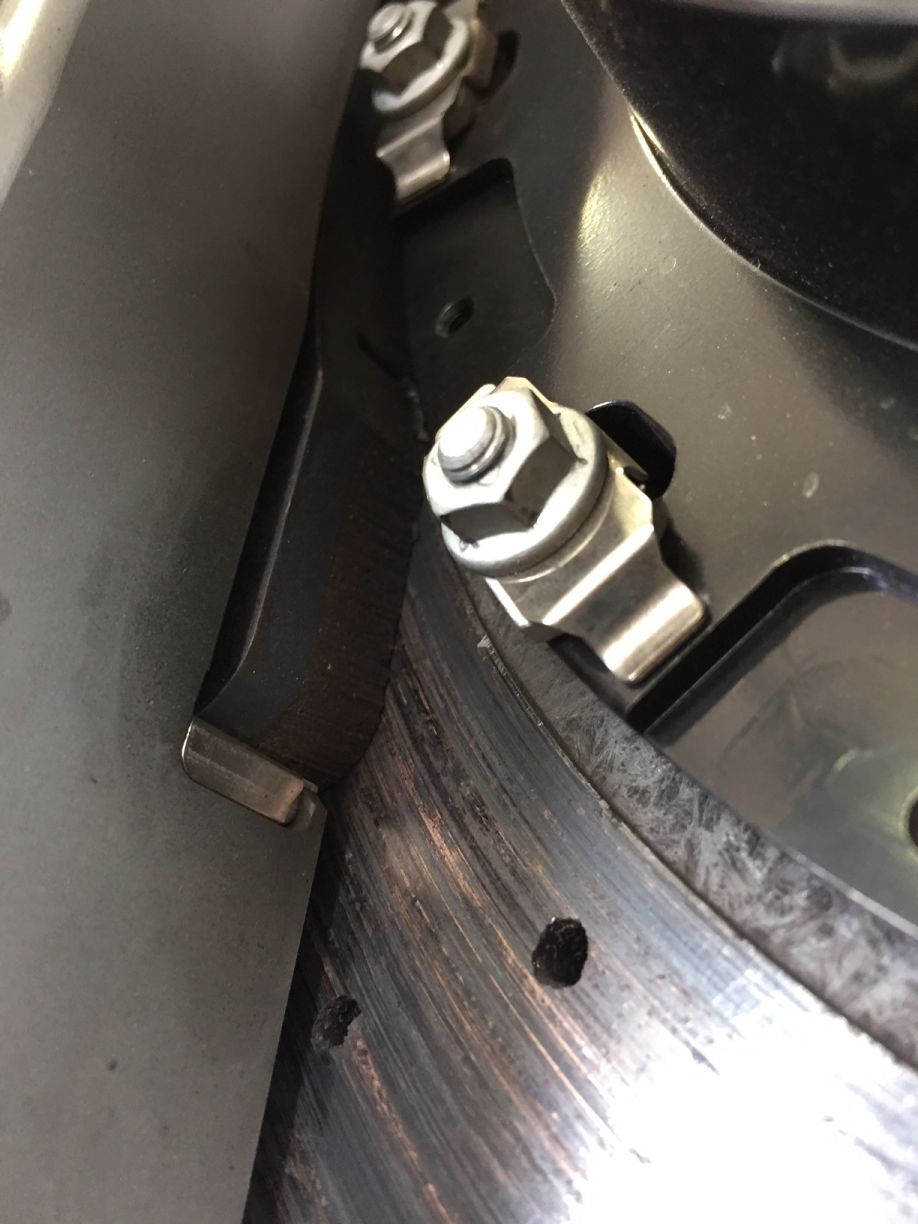There are no products listed under this category.
- SELECT VEHICLE
- TECHNICAL INFO.
- HOW TO CHECK WHEEL CLEARANCE
- HOW TO MEASURE A ROTOR OFFSET
Shop by Brand
Does Your Track Car Need Carbon Ceramic Brakes?
Get the pros and cons from a Rennlister who is also one of the most qualified Porsche racers on earth.
Rennlist forums member David Donohue literally drives Porsches for a living. He has a history of racing just about everything with wheels over the last few decades, including various prototypes and GT racers from various manufacturers. He raced for the famed Brumos Porsche team and has competed in every great endurance race in the world. On top of that, he’s probably got more miles in a 918 Spyder hypercar than anyone else. He also recently competed at Pikes Peak in a modified 911 Turbo S. Donohue has driven basically every brake compound and setup known to man, and there is hardly anyone more qualified to comment on whether a brake system is up to the task of slowing your Porsche.

Donohue’s most recent racing effort involved a 991.1-generation Porsche 911 Turbo S and the Pikes Peak International Hillclimb. The car began life as a fully decked out model with Burmeister audio and, of course, PCCBs. Even though the factory carbon ceramic brakes are adequate, the team decided that they needed to put a set of Racing Brakes CCMs and sintered brake pads in the wheel wells in order to fit a smaller race-oriented 18″ wheel and tire package. The car was equipped with a number of other racing-centric bits from Porsche’s various GT America, GT3 R, and GT3 Cup racer models, including big-downforce aero. Ultimately, the car finished 6th overall and second in the Time Attack 1 class; a phenomenal result for a PPIHC rookie in a car that’s never run there before.
Now that you know who Donohue is, and why he is qualified to comment, let’s take a look at what he had to say in regard to Racing Brakes’ carbon brake setup. In his very first post on the Rennlist forum, Donohue makes what may be the most cogent argument ever on an automotive forum. While the thread he posts in is ostensibly about Racing Brakes’ CCM rotors’ ability to “heal” after the rotor faces have been overheated when used with sintered brake pads, Donohue makes clear that he supports the entirety of RB’s setup as used on his Pikes Peak car.

The most important statement we can make here is that the RB supplied materials and calipers worked flawlessly from the beginning,” says Donohue. In fact, he has already confirmed that the team will be returning to Pikes Peak in 2018 aiming for a faster time, and will be retaining their current Racing Brakes setup (though augmented with a Bosch ABS and motorsport dual master cylinder setup).
Even with a very unique set of requirements, Racing Brake was able to fit the team’s needs quickly and the supplied components fit right on without modification. In the motorsport world, that is a massive benefit. Not to mention this setup was less expensive than going with a smaller PCCB system from a 997 model. The RB CCM setup was preferred to a full-race carbon/carbon setup because Pikes Peak is a sprint that requires full commitment from the start line to the finish, and having a brake setup that provides consistency at all temps is vastly preferred to one that requires you to build heat (which will cost a lot of time). In fact, the only complaint Donohue had at the end of a month of testing and racing, was that the brake rotors themselves were aesthetically unpleasant after use and that they made a bit more “grinding” noise than PCCBs do out of the box.
The fact of the matter is that racers will not use sub-par components just to save a buck, especially if they feel that these components would cost time on track. Donohue’s final word on the matter is as follows: “If anyone is on the fence about this system and asks me, I can recommend the RB CCM set-up. The parts supplied were very nicely made and finished, and fit straight out of the box with no modification. Our set-up was an odd one for sure, but Warren was very reactive and quick to respond. I can comfortably recommend without hesitation.”
